- Civil Jack
- Flown at the bow of a merchant ship (see also ‘civil ensign’ under ‘ensign’).
Please note, however, there are only two countries who prescribe a distinctive jack for general use by civilian vessels – the UK (see ‘pilot jack’) and the Bahamas as illustrated below. Sweden, for example, specifies regional flags, whilst the flags of home ports are sometimes officially used and the regulations of some shipping lines call for a house or other flag with this, upon occasion, being expressly permitted under national legislation.
![[Civil Jack]](../images/v/vxt-d183.gif)
From left: Civil Jack of the Bahamas (fotw); The Netherlands - unofficial (CS)- Government Service Jack
- Generally, but not exclusively, limited to the UK and former British colonies, and flown at the bow by civilian-manned Government vessels – but see ‘colonial jack 1)’ with its following note (also ‘government ensign’ under ‘ensign’ and the notes below).
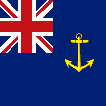
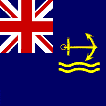
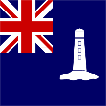
Jacks of The Royal Fleet Auxiliary, The Royal Maritime Auxiliary and Northern Lighthouse Board, UK (Martin Grieve)Notes
a) In UK usage all Government service vessels wearing defaced blue ensigns, including those used by the governing authorities of dependent territories, are legally entitled to fly a blue jack with an appropriate badge in the fly, however, (as far as can be discovered) only the Royal Fleet Auxiliary, the Royal Maritime Auxiliary and the Northern Lighthouse Board actually do so at present.
b) In Germany and Austria, Government (as well as civilian) vessels often fly the flag of the relevant state/province, and that in some commonwealth countries the appropriate departmental flag is specified as a jack for government vessels.- Naval Jack
- Flown at the bow of a warship, often the appropriate national flag (or a variation of it), occasionally the same as the naval ensign, or sometimes a completely different design - the jack (see also ‘masthead pennant 1)’, ‘naval ensign’ under ‘ensign’, ‘jack staff’ and ‘suit of flags’).
![[Russian naval jack]](../images/v/vxt-d187.gif)
![[Brasil naval jack]](../images/v/vxt-d187a.gif)
![[Norway naval jack]](../images/v/vxt-d187b.gif)
![[Italy naval jack]](../images/v/vxt-d187c.gif)
From left: Naval Jacks of Russia (fotw); Brazil (fotw); Norway (fotw); Italy (fotw) and Romania (fotw)
![[Jack of Honour - FNFL Jack]](../images/v/vxt-d188.gif)
The FNFL Jack, France (fotw)
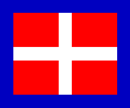
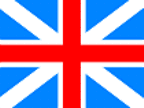
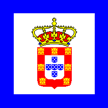
The Jack/Naval Jack 1879 – 1946, Italy (fotw);
The Jack/Union Jack 1606 – 1801, England/UK (CS);
The Jack/Naval Jack 1830 – 1911, Portugal (fotw)
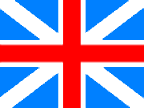
Union Flag 1601 – 1801, UK (CS)
Please note that this term appears to have been a 19th Century invention, and that there is no firm evidence of it being used during flag’s lifetime (1606 – 1801).
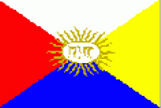
Flag of an Infantry Company c1675, Electorate of Saxony (Klaus-Michael Schneider)
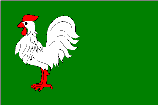
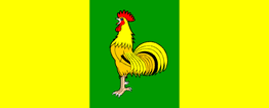

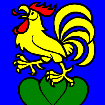
Flag of Líšná, Czech Republic (fotw); Flag and Arms of
Šentjernej, Slovenia (fotw); Flag of
Tavannes, Switzerland (fotw)

Flag of the Kingdom of Jerusalem 1162 – 1191 (fotw)
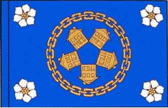
Flag of The Union of British Columbia Municipalities, Canada (fotw)
![[pirate flags - Jolly Roger]](../images/v/vxt-d189.gif)
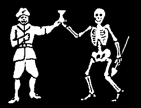

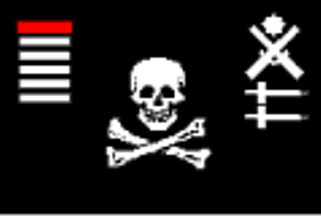
From left: Flag as described above (fotw);
Flag of Bartholomew Roberts 17th C (fotw); Flag of
Edward Lowe Early 18th C (fotw);
Submarine Service, UK (CS).
Notes
a) With regard to 1), vessels of the US Navy often
fly a Jolly Roger at the yardarm during line-crossing ceremonies (as the signal that King Neptune
is aboard), and note also that of all known pirates only Blackbeard is thought to have actually
used this design. (see also ‘yardarm’).
b) With regard to 2), it should be emphasised that these symbols were
(and are) entirely unofficial, and that a several variations are known.

![[Civil Jack]](../images/v/vxt-d183a.gif)
![[Romania naval jack]](../images/v/vxt-d2661.gif)
![[Jack pin]](../images/v/vxt-d1343.gif)
![[Jack staff]](../images/v/vxt-d1644.jpg)

![[Jingling Jonny]](../images/v/vxt-d283.gif)